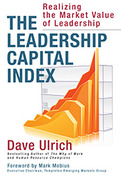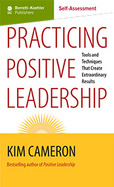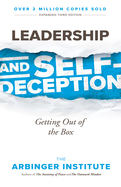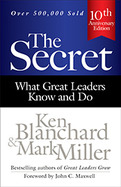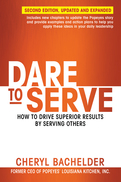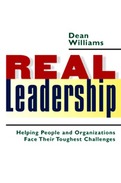We know that financial outcomes can predict about 50 percent of a firm's market value. Intangibles like strategy, brand, talent, R&D, innovation, risk, and so on account for the rest. But leadership underlies them all. And despite how important we know it is, we've been forced to rely on subjective and unreliable ways to measure its impact—until now.
In this landmark book, leadership scholar, author, and consultant Dave Ulrich proposes a “leadership capital index”—a Moody's or Standard and Poor's rating for leadership. Drawing on research from investors and business leaders, and synthesizing the work of dozens of consulting firms and leadership experts, Ulrich analyzes two broad domains, each comprising five factors. The individual domain includes personal qualities, strategic prowess, execution proficiency, interpersonal skills, and fit between the leader's style and the organization's market promises. The organizational domain encompasses a leader's ability to create customer-focused cultures, manage talent, demand accountability, use information to gain competitive advantage, and set up work processes to deal with change.
Ulrich details rigorous metrics and methods for evaluating leaders on each of these factors. The result is a groundbreaking book that will be of vital interest not only to equity and debt investors but also to boards of directors, executive teams, human resource and leadership development professionals, government and ratings agencies—and of course to leaders themselves.
Product: Online streamed self-assessment application (not downloaded), limited one-year subscription (5 tests or 12 months, whichever comes first), password controlled
Duration: 68 questions in ten categories (the first five related to Positive Leadership book; the second five related to the Practicing Positive Leadership book): 1) Positive Climate, 2) Positive Relationships, 3) Positive Communications, 4) Positive Meaning, 5) Personal Managemnt Interviews, 6) Create a Culture of Abundance, 7) Developing Positive Energy, 8) Accomplishign Everest Goals, 9) Deliver Negative Feedback Positively, 10) Apply in Organizations. The self-assessment takes 15-20 minutes to complete.
Results: You will receive a radar graph that shows your relative strenths and weaknesses in the ten areas described above. The author also offers interpretation of your results and provides references for each of the ten areas in his two books, Positive Leadership (questions 1-24) and Practicing Positive Leadership (questions 25-68). By reading your results, you can gain important insights on how to practice positive leadership in your organization. The author addresses next steps both for the individual and groups. There are also opening and closing statements from the author, the ability to compare current and former results, and a print option.
BASED ON THE BOOK: PRACTICING POSITIVE LEADERSHIP Over a decade ago, Kim Cameron and some colleagues decided that rather than analyze what went terribly wrong with organizations and how to prevent it, they would look at what went extraordinarily right and how to replicate it. This was the birth of positive organizational scholarship, a new field that focused on what they called "positive deviance"-outcomes that far exceeded normal success.
In his previous book Positive Leadership, Cameron outlined four leadership strategies-Positive Climate, Positive Relationships, Positive Communications, and Positive Meaning-that characterize exceptionally high-performing organizations. Here he takes these strategies further by laying out tactics for implementing them:
- Creating a Culture of Abundance: five specific steps leaders can take to create an organizational culture that enables members to experience vitality, flourishing, and engagement
- Developing Positive Energy Networks: tools and practices for cultivating positive energy in oneself and for diffusing it throughout the organization
- Delivering Negative Feedback Positively: techniques for delivering difficult but necessary messages in ways that build and strengthen relationships
- Establishing and Achieving Everest Goals: guidelines for setting goals that have all the characteristics of SMART goals but go far beyond them
- Applying Positive Leadership in Organizations: a powerful tool for determining exactly how to implement positive leadership practices in the particular circumstances of your organization
Study after study (some of which are cited in the book) has shown that companies practicing positive leadership far outperform their competitors. So virtue may be its own reward, but it also delivers breakthrough results that any organization can achieve thanks to Kim Cameron's concise, how-to guide.
PURCHASER AND USER NOTE: If you are an individual consumer newly purchasing the assessment, go directly to the shopping cart by clicking the "add to cart" icon to your left. If you are a member of an organization that has purchased a bulk order, or if you already bought the assessment in the last 12 months and are retaking it now using the original Access Key to retake the assessment please log in here. New registrants: Please enter your "Access Key" into the input field to enter the self-assessment for the first time. A note to frequent purchasers: You cannot use your current bkconnection.com password for this product; you must create and use a new password. For any questions, please contact the support desk at 800-929-2929 (8 am-9 pm Eastern U.S. time, Monday through Friday), or [email protected]. Thank you.
Since its original publication in 2000, Leadership and Self-Deception has become an international word-of-mouth phenomenon. Rather than tapering off, it sells more copies every year. The book's central insight—that the key to leadership lies not in what we do but in who we are—has proven to have powerful implications not only for organizational leadership but in readers' personal lives as well.
Leadership and Self-Deception uses an entertaining story everyone can relate to about a man facing challenges at work and at home to expose the fascinating ways that we blind ourselves to our true motivations and unwittingly sabotage the effectiveness of our own efforts to achieve happiness and increase happiness. We trap ourselves in a “box” of endless self-justification. Most importantly, the book shows us the way out. Readers will discover what millions already have learned—how to consistently tap into and act on their innate sense of what's right, dramatically improving all of their relationships.
This third edition includes new research about the self-deception gap in organizations and the keys to closing this gap. The authors offer guidance for how to assess the in-the-box and out-of-the-box mindsets in yourself and in your organization. It also includes a sample of Arbinger's latest bestseller, The Outward Mindset.
2014
The authors get at the heart of what makes a leader successful in this classic business fable. Newly promoted but struggling young executive Debbie Brewster asks her mentor, “What is the secret of great leaders?” His reply—“great leaders serve”—flummoxes her, but over time he reveals the five fundamental ways that leaders succeed through service. Along the way, Debbie learns:
• Why great leaders seem preoccupied with the future
• How people on the team ultimately determine your success or failure
• What three arenas require continuous improvement
• Why true success in leadership has two essential components
• How to knowingly strengthen—or unwittingly destroy—leadership credibility
This new edition includes a leadership self-assessment so readers can measure to what extent they lead by serving and where they can improve. The authors have also added answers to the most frequently asked questions about how to apply the SERVE model in the real world. As practical as it is uplifting, The Secret shares Blanchard and Miller's wisdom about leadership in a form that anyone can easily understand and implement.
At one time or another, everyone in a position of authority-whether in a multi-national corporation or a local volunteer group-wonders what the key to great leadership is. And who better to answer that question than the team of Ken Blanchard, whose books on leadership have sold over 20 million copies, and Mark Miller, who worked his way up from line worker to vice president of one of the largest fast-food chains in the country. In The Secret, Blanchard and Miller use the uniquely accessible "business fable" format that Blanchard pioneered to get at the heart of what makes a leader truly able to inspire and motivate people. Debbie Brewster, recently promoted and struggling, finds herself about to lose her job due to poor performance. In an attempt to save her career, she enrolls in a new mentoring program offered by her company. Much to her surprise, Debbie finds her mentor is none other than Jeff Brown, the president of the company. Debbie decides that she is going to ask her new mentor the one question she feels she desperately needs answered: "What is the secret of great leaders?" Jeff's immediate answer-that great leaders serve their followers-completely flummoxes Debbie. Over the next 18 months, Jeff helps Debbie discover and explore five fundamental ways that leaders lead through service.
The Secret puts what Blanchard and Miller have learned about leadership in a form that anyone can easily understand, embrace, and pursue. It is a book that will benefit not only those who read it, but also the organizations they work in and the people who look to them for guidance.
The second edition includes revised and updated content including:
• A new foreword by John Maxwell
• A new resource section in the back matter summarizing key learning points
• A greater focus on the book's primary focus: servant leadership
• A more humanized protagonist
• Numerous other minor renovations throughout
2018
In this updated edition of Dare to Serve, former Popeyes CEO Cheryl Bachelder shows that leading by serving is a rigorous and tough-minded approach that yields the best results.
When she was named CEO of Popeyes in 2007, the stock price had slipped from $34 in 2002 to $13. The brand was stagnant, the team was discouraged, and the franchisees were just plain angry. Nine years later, restaurant sales were up 45 percent, restaurant profits had doubled, and the stock price was over $61. Servant leadership is sometimes derided as soft or ineffective, but this book confirms that challenging people to reach a daring destination, while treating them with dignity, creates the conditions for superior performance.
The second edition of this bestselling book includes Bachelder's post-Popeyes observations and new examples of how you can switch your leadership from self to serve. Ever engaging and inspirational, Bachelder takes you firsthand through the transformation of Popeyes and shows how anyone, at any level can become a Dare-to-Serve leader.
2005
- Presents a new, more effective approach to leadership: helping people to honestly face reality and deal with their most pressing problems, rather than imposing ideas and solutions on them
- Shows how to apply this new approach to six major organizational challenges
- Offers actual examples of real leadership in action


